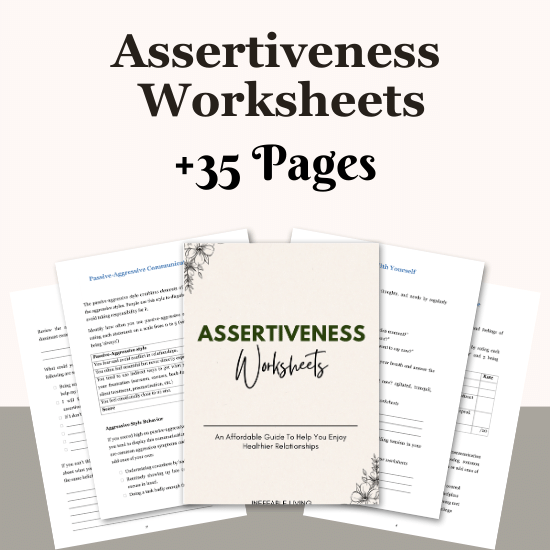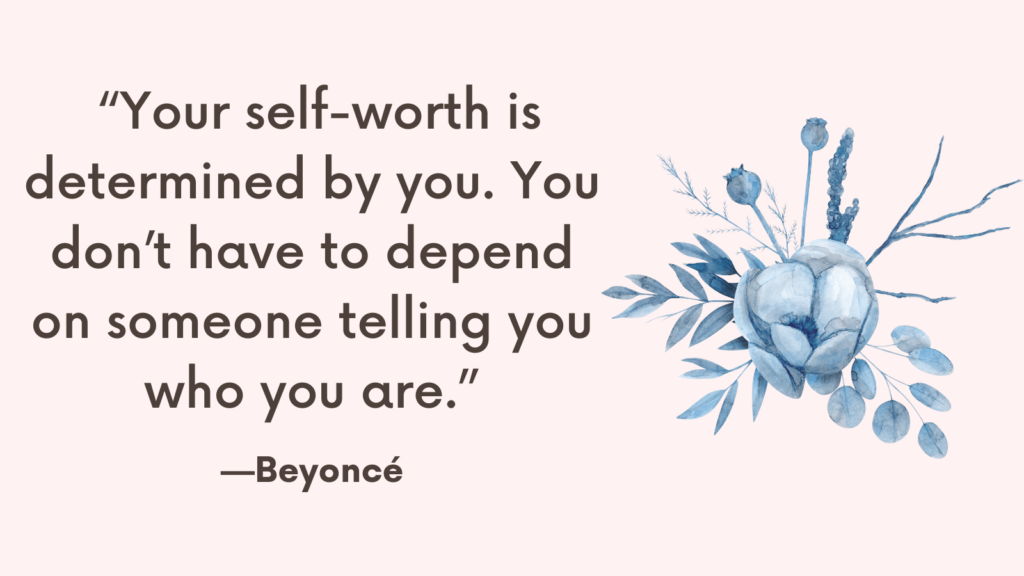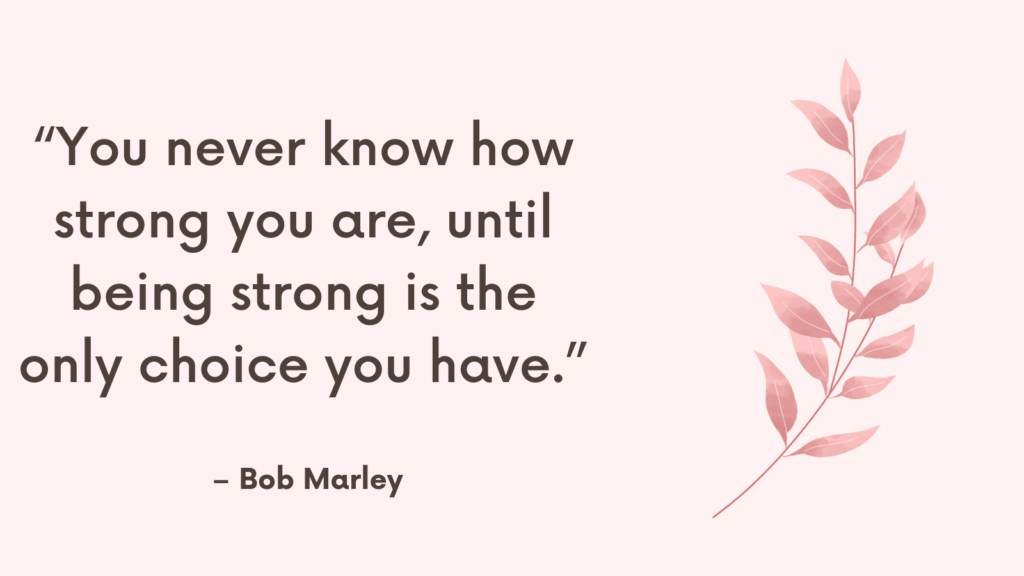In this post, you’ll learn all about protecting your peace from negativity.
Types of Negativity
It’s crucial to understand the various sources and manifestations of negativity that can impact an individual’s well-being. Here are some common types of negativity that individuals may encounter:
1. Negative Self-Talk: This involves an internal dialogue characterized by self-criticism, doubt, and harsh judgments toward oneself. Negative self-talk can erode self-esteem and contribute to feelings of unworthiness or inadequacy.
2. Toxic Relationships or People: Interactions with individuals who consistently exhibit manipulative, critical, or draining behaviors can create a toxic environment. These relationships may foster feelings of anxiety, low self-worth, and emotional distress.
3. Negative News and Media Exposure: Constant exposure to distressing news, sensationalized media, or negative content on social platforms can contribute to heightened levels of stress, fear, and a pessimistic worldview.
4. Rumination: Excessive rumination involves repeatedly dwelling on past negative experiences or hypothetical future problems, which can prolong distress and impede emotional healing.
5. Unresolved Emotional Wounds: Lingering emotional pain from past traumas, rejections, or disappointments can fuel a negative mindset and hinder current well-being.
6. Stressful Environments: High-pressure work environments, chaotic living situations, or constant exposure to conflict and tension can foster chronic negativity and emotional exhaustion.
Related: Top 8 Tips on Letting Go of Toxic People
Top 15 Tips on Protecting Your Peace from Negativity
Protecting one’s peace from negativity involves establishing healthy boundaries, cultivating resilience, and engaging in proactive strategies to promote emotional balance. Here are some tips to safeguard your peace from negativity:
#1. Self-awareness and Mindfulness
Develop self-awareness regarding your emotional responses to negative stimuli. Practice mindfulness techniques to observe and acknowledge negative thoughts or emotions without judgment.
Mindfulness encourages living in the present moment, reducing rumination about past events or anxiety about the future.
Here is a simple mindfulness exercise that you can incorporate into your daily routine:
1. Find a comfortable and quiet space where you can sit or lie down without distractions. You may choose to close your eyes or maintain a soft gaze, whatever feels most natural to you.
2. Begin by taking a few deep breaths, focusing on the sensation of the air entering and leaving your body. Notice the rise and fall of your chest and abdomen with each breath.
3. Once you have established a steady rhythm of breathing, shift your attention to the experience of the present moment. Acknowledge any sounds, sensations, or thoughts that arise without attempting to change them.
4. Direct your focus to the physical sensations associated with breathing. Notice the gentle expansion of your lungs as you inhale, and the release of tension as you exhale. Allow your breath to flow naturally, without forcing or altering it.
5. If your mind begins to wander, gently guide your attention back to the breath. Practice observing each inhalation and exhalation with a sense of curiosity and non-judgment.
6. As you continue this mindful breathing exercise, you may choose to incorporate a silent affirmation or mantra related to peace, such as “I am calm and at peace” or “I breathe in peace, I breathe out tension.” Repeat this affirmation with each breath, allowing it to guide your focus and intentions.
7. Gradually expand your awareness to encompass the entirety of your body and surroundings. Notice the contact between your body and the surface it rests upon, as well as any lingering sensations or emotions that may have arisen during the practice.
8. Take a moment to express gratitude for this period of mindfulness and the opportunity to cultivate inner peace. When you feel ready, gently transition back to your daily activities with a renewed sense of tranquility and centeredness.
Incorporating this mindfulness exercise into your routine, even for just a few minutes each day, can be a powerful tool for promoting peace and emotional balance. Over time, consistent practice can help you develop greater resilience in the face of stress and adversity.
Related: How To Not Let People Get To You? Top 7 Strategies
#2. Establish Boundaries
Identify sources of negativity in your life, whether they stem from relationships, social media, news consumption, or environmental factors.
Establish clear boundaries to limit your exposure to these influences where possible.
This may involve setting limits on social media usage, creating distance from toxic relationships, or carefully selecting the content you engage with.
#3. Selective Social Circle
Surround yourself with supportive and positive individuals who uplift and encourage you.
Cultivate relationships with people who share similar values and contribute positively to your well-being.
Evaluate your social circle and consider minimizing interactions with individuals who consistently bring negativity into your life.
#4. Emotional Regulation
Practice emotional regulation techniques to manage and respond to negative emotions effectively.
This may include deep breathing exercises, progressive muscle relaxation, or engaging in physical activities that promote stress reduction such as yoga or meditation.
Related: Dysregulated Nervous System: Top 9 Signs & How to Heal
#5. Limit Exposure to Negative News
While staying informed is essential, excessive exposure to negative news can contribute to heightened anxiety and distress.
Set specific times for consuming news and select reputable sources.
It’s important to stay informed while maintaining a balanced approach to news consumption.
#6. Gratitude Practice
Cultivate a regular gratitude practice to shift your focus towards positive aspects of your life.
Keeping a gratitude journal or routinely reflecting on things you are grateful for can enhance your overall outlook and buffer against the impact of negativity.
Related: +400 A To Z Gratitude List
#7. Engage in Positive Activities
Actively seek out activities and hobbies that bring joy, fulfillment, and positivity into your life.
This may include spending time in nature, engaging in creative pursuits, participating in physical exercise, or volunteering for causes that align with your values.
#8. Limit Perfectionism
Recognize and challenge tendencies towards perfectionism, as it can contribute to heightened stress and self-criticism.
Embrace a growth mindset and acknowledge that mistakes or setbacks are part of the human experience.
Practice self-compassion and self-acceptance in the face of challenges.
Related: Letting Go of Perfectionism: Best 20 Tips
#9. Professional Support
If negativity significantly impacts your mental well-being or becomes overwhelming, consider seeking support from a qualified mental health professional.
Therapy can provide valuable tools and strategies to address negative thought patterns, build resilience, and cultivate a more positive outlook.
#10. Set Realistic Expectations
Strive to set realistic expectations for yourself and others, understanding that not everything will go as planned.
Embracing flexibility and adaptability can reduce the impact of disappointment and frustration when faced with unexpected outcomes.
#11. Healthy Lifestyle Choices
Prioritize self-care by ensuring adequate sleep, regular physical activity, and balanced nutrition.
Maintaining a healthy lifestyle can bolster your resilience and ability to cope with challenging circumstances.
Related: Top 13 Toxic Habits Everyone Should Quit To Build Emotional Resilience
#12. Limit Comparisons
Minimize comparisons with others, particularly on social media platforms.
Recognize that curated online content may not accurately reflect reality, and focusing on your own journey and progress can foster a healthier sense of self-worth.
#13. Practice Assertiveness
Develop assertiveness skills to effectively communicate your needs and boundaries while respecting those of others.
Assertive communication can help minimize conflict and reduce the likelihood of being drawn into negative interactions.
Related: Assertive Anger: What It Is & How to Practice It
#14. Reflect on Core Values
Reflect on your core values and beliefs.
Aligning your actions and decisions with these values can provide a sense of purpose and direction, contributing to a more positive and fulfilling life.
#15. Seek Out Positive Influences
Engage with uplifting and inspirational content, such as motivational literature, podcasts, or personal development resources.
Surrounding yourself with positive influences can counteract the effects of negativity in your environment.

Conclusion
By implementing these strategies, individuals can proactively protect their peace from negativity and cultivate a resilient mindset in the face of life’s challenges.
It’s important to remember that prioritizing mental well-being is an ongoing process.



